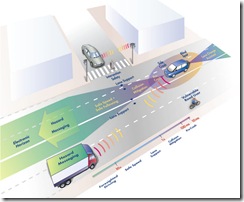That’s the question being asked over at Space.com as the anniversaries of the Challenger and Columbia disasters draw near. The question is rhetorical: of course it’s bloody dangerous. Strapping oneself to a firework the size of a small office building in order to travel beyond the gravity well into an environment that’s as inimical to human life as can be imagined… you’d have to be pretty naive to imagine it could ever be otherwise, really. Statistically, though, it’s a lot safer than you might have thought:
NASA has launched 132 manned shuttle missions in the 30 years of the space shuttle program. The agency has lost two of them — Challenger and Columbia.
Russia’s Soyuz program has a similar failure rate, with two fatal accidents in just over 100 manned missions — though Soyuz hasn’t had a fatality in nearly 40 years.
The shuttle and Soyuz risks are thus in the same ballpark as the chances of dying while trying to climb Mount Everest. From 1922 to 2006, one out of every 49 people who undertook the climb ended up dying, O’Connor said.
2% risk of fatality… considering the prize on offer, I’d take that gamble without a second’s hesitation (though I freely admit I’d probably be terrified the whole time).
This question always reminds me of Stephen Baxter’s novels of the early noughties, which had a tendency to feature maverick can-do types embracing the risk of space flight as a means to an end… or rather a means to potentially averting a very nasty existential end for the entire species. Much as it’s an understandable reaction, I think the shuttle disasters were probably one of the biggest contributors to the fading-off of interest in the space program in the public mind (though that whole end-of-the-Cold-War thing certainly played a part as well; much like sports, the veneer of the glorious drive to explore covered up what was essentially a pissing contest between two superpowers, and anyone with even a passing knowledge of Freud can spot the clues a mile away). Political interest in space seems to be on the uptick again, though (possibly because funny-coloured people in far-away countries are getting close to taking some dusty trophies from the Western cabinet) – so how to balance that urge with our risk-obsessed culture?
As Baxter’s novels – and the public response to the recent suggestion of one-way manned missions to Mars – demonstrate, there’s no shortage of people who’d be willing to take the risk of dying in exchange for the chance to go into space, and the emerging commercial space outfits ill doubtless take a less political view of risk management if the ROI looks good. And as Karl Schroeder (among others) has repeatedly pointed out, the risks can be mitigated by investment in better technologies. Crossing the oceans was once the most risky undertaking a human society could imagine, as was powered flight, but now we do both without a second thought.
Human spaceflight could easily become as safe as commercial air travel, so long as we have to have the guts and will to take the risks involved with getting better at it.


